Norovirus diversity and host range
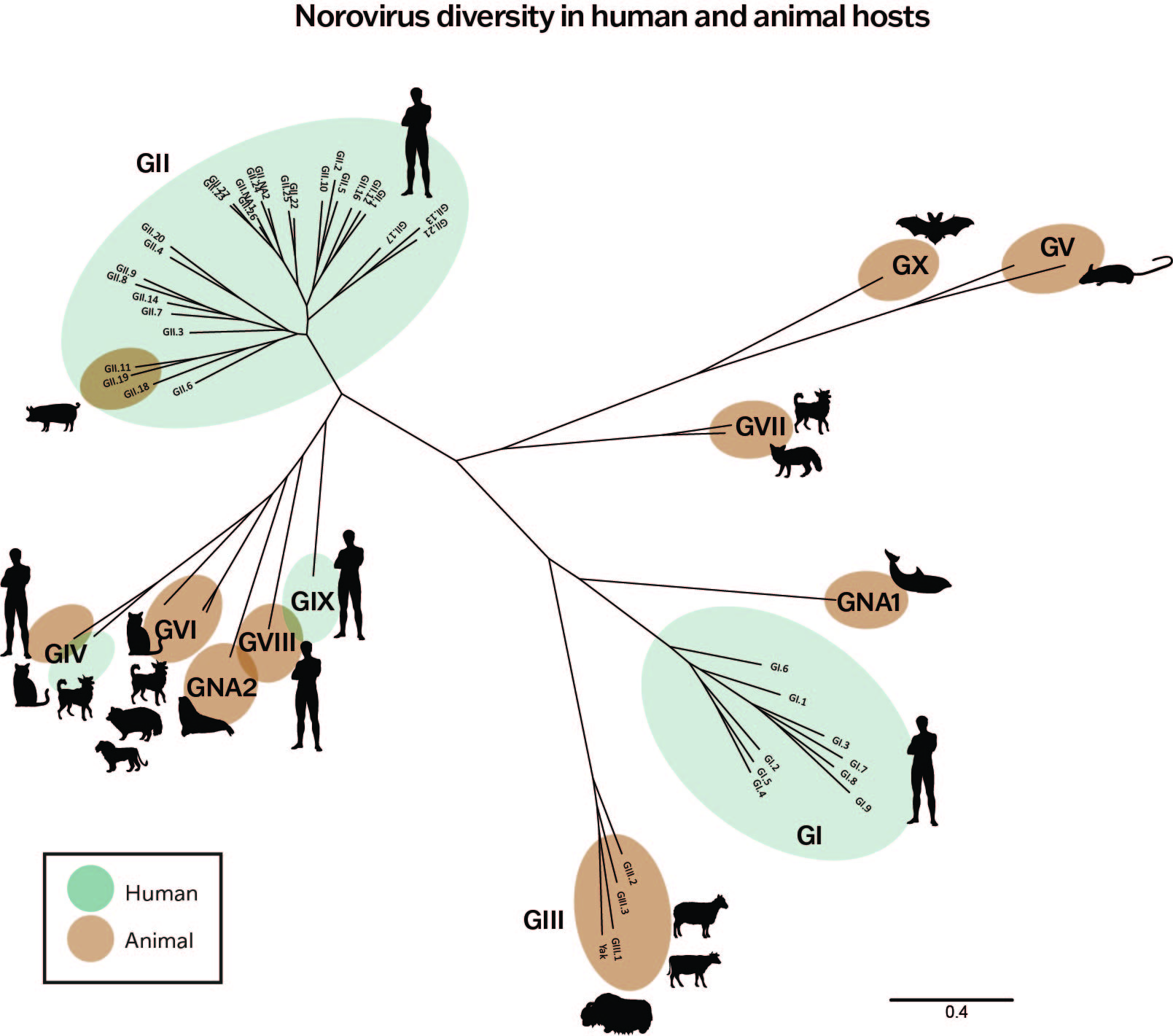
Noroviruses are a diverse group of viruses that have already been detected in 15 species worldwide. They include livestock (cattle, pigs, yaks, and sheep), common pets (dogs and cats), as well as wild animals (rats, bats, sea lions, harbour porpoises, raccoon dogs, foxes, and minks). In some animals, such as cats, dogs, and cows, norovirus infections are associated with similar symptoms as in humans (mainly diarrhea). Still, for many species it is not clear whether noroviruses cause disease. Some noroviruses, including those infecting pigs, dogs, and cats, are closely related to human noroviruses. This has sparked the idea that some noroviruses could jump between animal and human hosts.
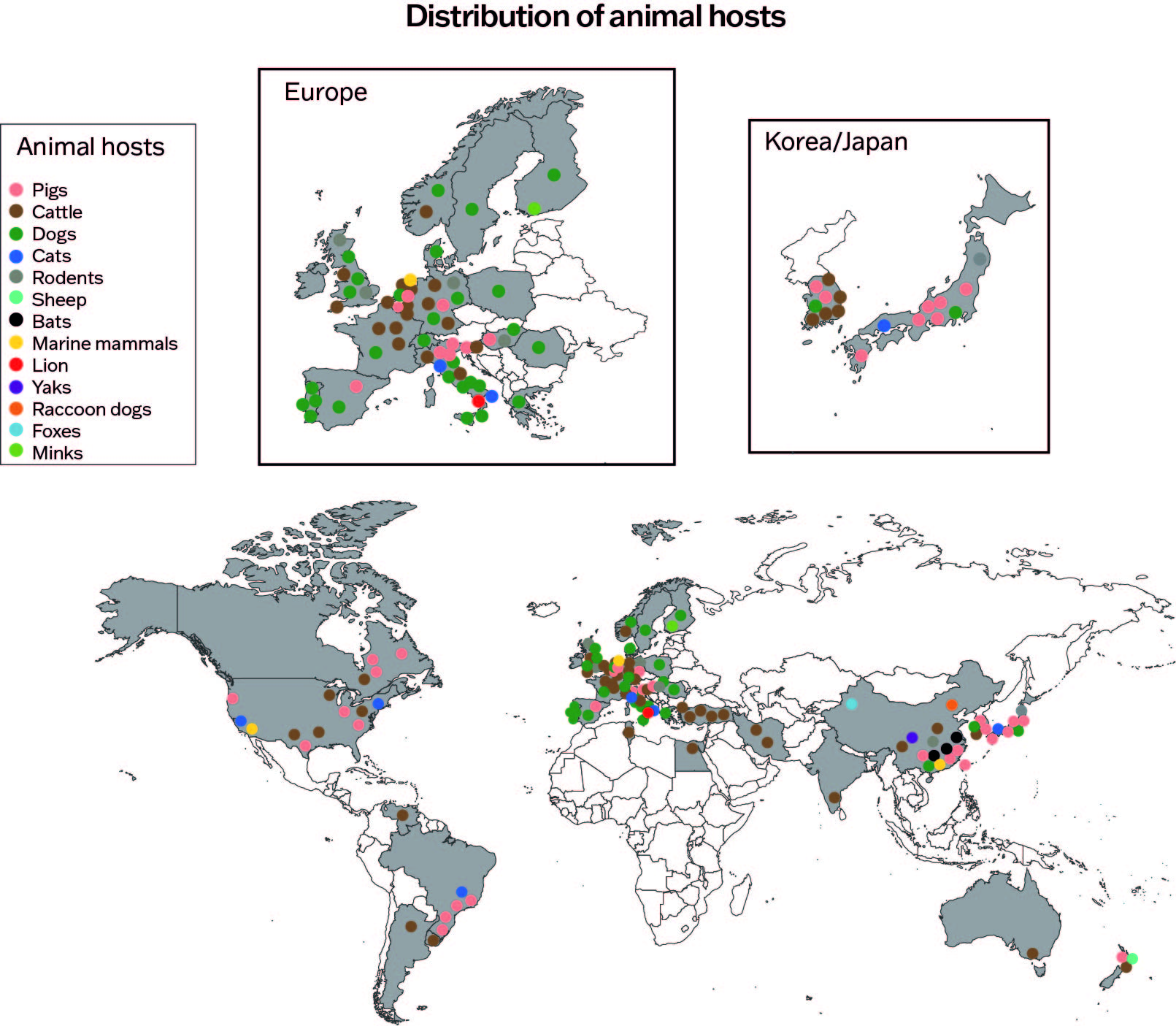
Interspecies transmission
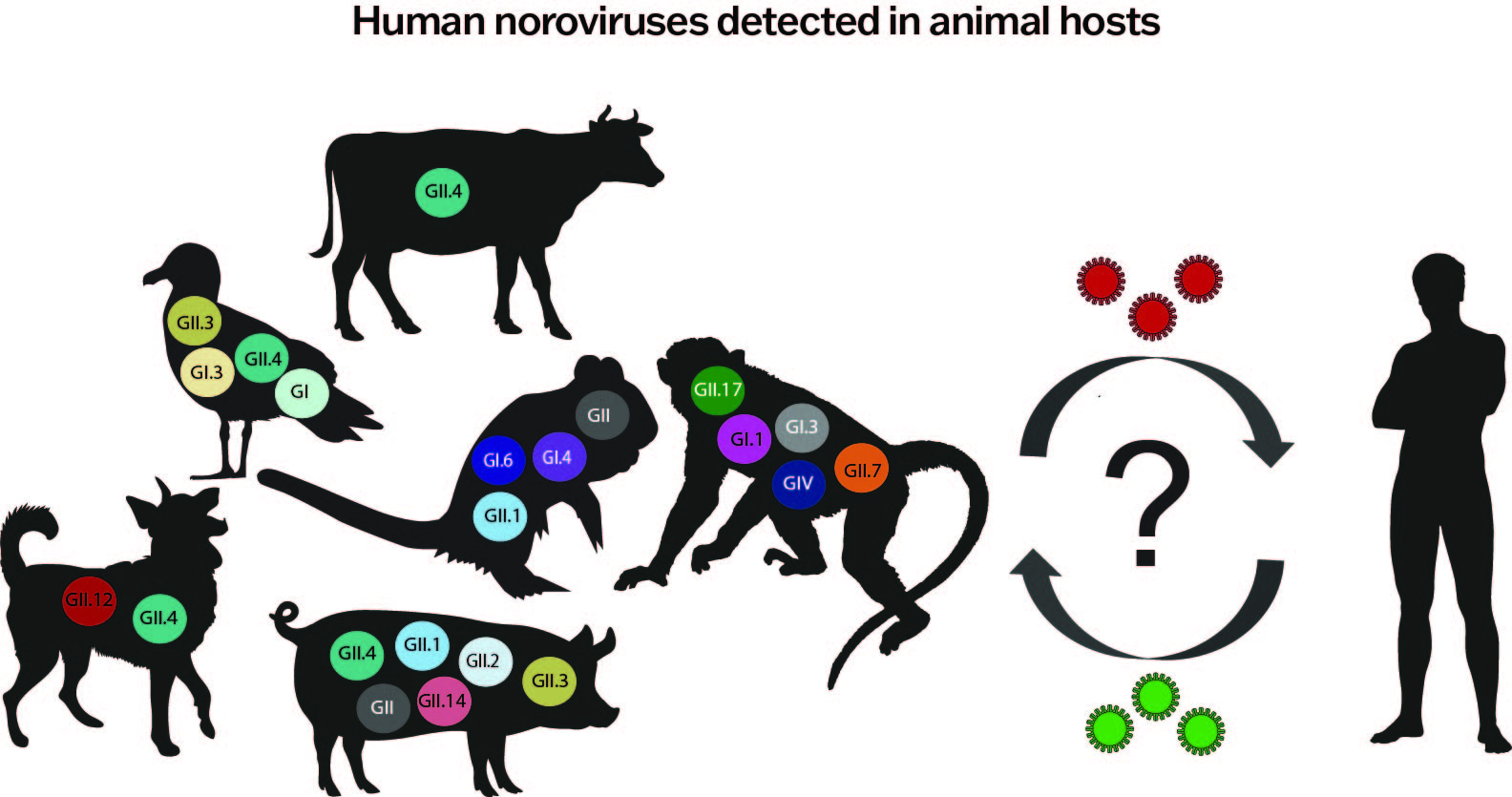
Due to the high similarity between some animal and human noroviruses, interspecies transmission has been suggested. In humans, evidence of animal noroviruses infecting humans is purely based on serology studies and anecdotal evidence. Several studies showed that humans with more intense interactions with dogs and cows, such as veterinarians, had a higher seroprevalence of antibodies that recognized canine and bovine noroviruses. However, standard norovirus diagnostic does not include testing for animal noroviruses, so very few studies have investigated this question. In animals, antibodies that recognize humans have been detected in pigs, dogs, and primates. In addition, various human noroviruses were detected in the feces of domestic and wild animals (pigs, dogs, cattle, rats, crows, gulls, macaques, and chimpanzees).
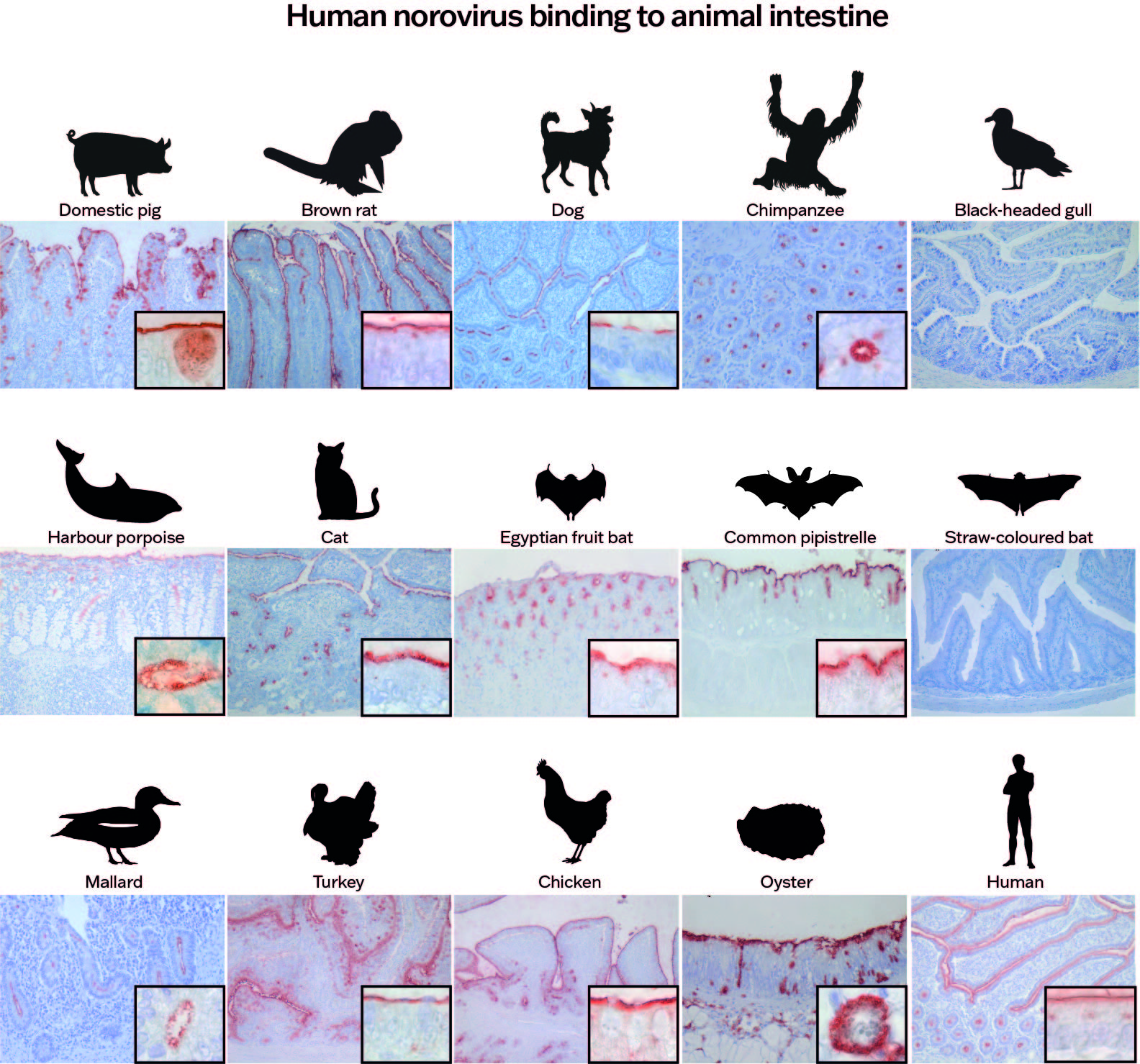
To investigate which species might be more susceptible to human norovirus infection, I tested the binding of 15 norovirus strains to the intestinal tissue of 14 species. We detected norovirus attachment (seen in red) to the intestinal epithelium of 12 species. The only exceptions were the black-headed gull and the straw-coloured fruit bat. To some animals, such as dogs and the common pipistrelle, all noroviruses attached, while to others, only a few attached. Whether norovirus binding is a good indication of a species’ susceptibility should be further investigated.
Human reservoir
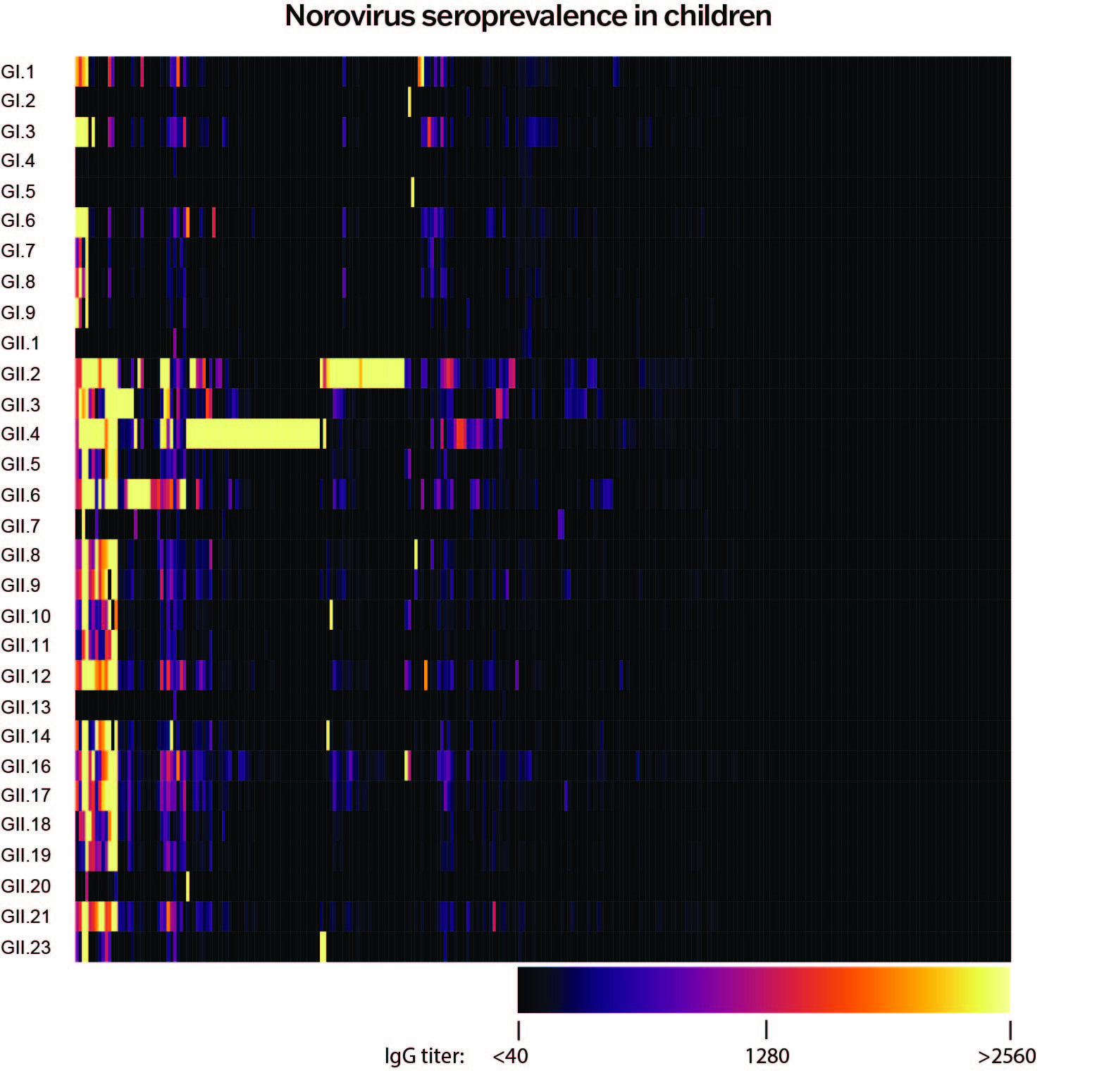
In addition to an animal reservoir, new noroviruses could also emerge through undetected circulation. Norovirus circulation is not equally surveilled globally, and in some countries, very little is known about norovirus outbreaks. To assess which noroviruses are causing infections, I developed a protein microarray to test the seroprevalence of noroviruses in children. We included the capsid protein of 27 human noroviruses and the non-structural proteins, as these are more diverse between norovirus strains than the capsid. Sera from children aged 0–5.5 years from seven European countries were included. Our results showed that by the age of five, >80% of the children had IgG and 40% IgA anti-norovirus antibodies. The majority of antibodies were directed against the norovirus strains that are also most commonly detected in outbreaks across Europe. This array could further be used to test the seroprevalence from other regions.